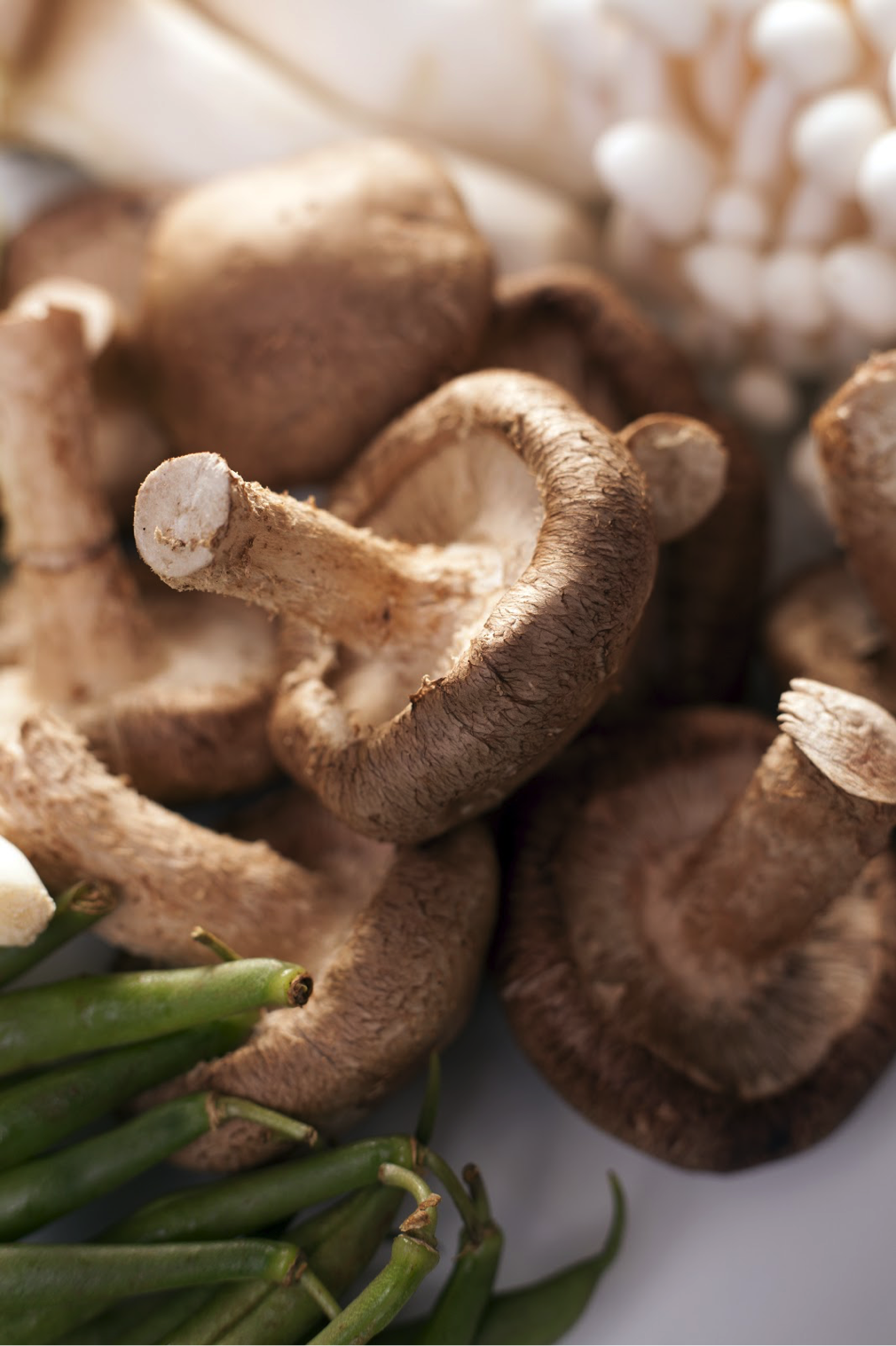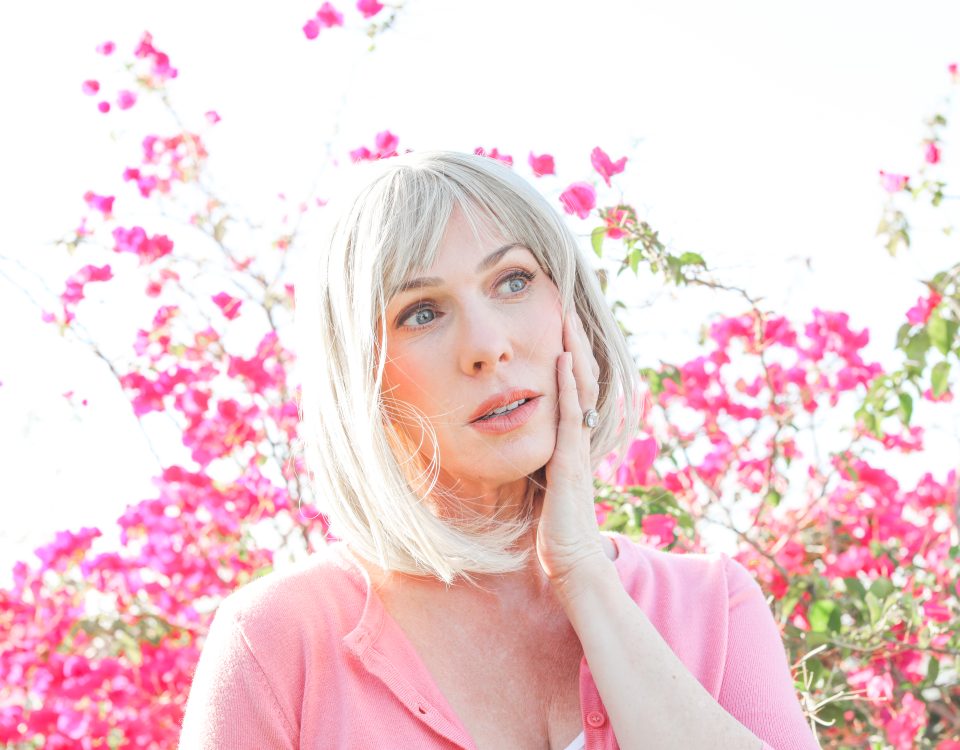Thyroid nodules can be scary. This blog will help you understand what they are, how much fear is justified, and what you can do about them.
- Have any questions?
- 480-631-7837
- support@in-goodhealth.com

Crispy Garlic and Mushroom Green Beans
March 28, 2019
How To Interpret Your Thyroid Labs
April 8, 2019
Crispy Garlic and Mushroom Green Beans
March 28, 2019
How To Interpret Your Thyroid Labs
April 8, 2019Product Recommendation: Nodule Control has been clinically proven to slow the rate of nodule growth, reduce the size of existing thyroid nodules and lower the risk of nodules progressing to thyroid cancer. Click Here
Why Nodules are Scary
To understand why they are scary, it is necessary to know their context.
Before the diagnosis of nodules, there is usually a diagnosis of thyroid disease. Someone is living their life – getting through adulthood just fine. Suddenly things are not fine. The rules have changed.
The level of vitality they came to count on is no longer there. They are too tired to do what used to be normal. Their exercise and diet no longer maintain their weight. Their body has betrayed them.
All too often, this problem took too long to land on an explanation. By the time thyroid disease got diagnosed, most people were already suffering for years. There were likely several medical encounters that went badly. It is hard enough to speak up and ask for help. But it really hurts when you do ask for help and a doctor says that nothing is wrong – you don’t need help. You are imagining something that is not there. Even when you eventually are validated by a diagnosis – that alone is not enough to erase the bad feelings.
Now, in addition to not feeling well, now the person does not trust their doctor. Specifically, they learned that the doctor downplayed things. The doctor told them things were not as bad as they really were.
Next comes the nodule diagnosis. Finally, their doctor tells them that their thyroid is to blame for many of the symptoms. The doctor does an ultrasound and finds more bad news – there is something abnormal about your thyroid.
Quickly you learn that this abnormality can be a risk for cancer. Things just went from bad to worse. Now you can understand why it is hard to feel reassured when the doctor says not to worry because most nodules are harmless.
You’ve already learned that bad things can happen. Bad things you did not expect. You also learned that your doctor may downplay things. Given the context, it makes perfect sense that thyroid nodules are scary.
What are thyroid nodules?
Your thyroid is a cluster of thyroid cells. Healthy thyroid cells form rings called follicles. Imagine all the little spaces inside a sponge. A healthy thyroid is like a sponge with each space a follicle.
To put it simply, nodules are abnormal lumps of thyroid tissue. The thyroid itself has a normal buildup of cells, called follicles, that:
- Pull in iodine
- Take tyrosine
- Make thyroglobulin
- Utilize thyroid peroxidase
These little nest-like follicles of cells actually build hormones in your body. Performing all of these steps in order for your thyroid to function as it should.
Thyroid cells die off and new cells grow in to take their place. But it does not always work perfectly.
Sometimes too many new cells are grown. Sometimes they are too close together. Sometimes the follicles are too large and become filled with fluid. Any of these changes can cause lumps to develop. Such lumps are nodules.
Nodules are areas of abnormal density within otherwise normal thyroid tissue.
Bottom Line: Your thyroid has such an important job to perform. All of the moving parts can sometimes result in unwanted bits of follicles that simply build up over time.
In some cases, the abnormal cells in nodules keep on growing. This is how thyroid cancers can start. Most thyroid cancers start from nodules but most nodules never become cancerous.
We have statistics suggesting that out of every 20 thyroid nodules, 1 may be cancerous. Yet these statistics can be misleadingly scary because most nodules lack any indication that they will cause problems.
The other wrinkle is that most thyroid cancers are not significant. You might reread that last sentence. It can be shocking but it is true.
Thyroid cancers generally start later in life, take a long time to grow, and take even longer to leave the thyroid. Because of these facts, most people who have thyroid cancer will live out a normal lifespan and never know it. They will die with cancer, but not from it.
There are cases where thyroid cancer is a big deal and where treating it saves lives, but this is less common.
One should not ignore thyroid nodules or the risk they present but there are ways in which the risk looks worse than it is.
How Common are Thyroid Nodules?
They are really common. For many adults, it is more likely that they have a nodule than not. One statistic is that one’s age in years roughly equals their likelihood of developing thyroid nodules. For example, a 60 year old woman has about a 60% chance of having a nodule.
Who Gets Thyroid Nodules?

The people who get thyroid nodules parallel percent and decade by age quite conveniently. What we see with women; is that their age and their decade corresponds quite clearly with their risk for developing nodules.
Key Insight: If you are 30, there is about a 30% risk of you developing thyroid nodules. If you are 50, there is a 50% chance of you developing thyroid nodules. The same applies for being 60 (60%) and 70 (70%).
Overall, developing thyroid nodules is three times more common to occur in women over men1.
What Causes Thyroid Nodules?
The main cause of nodules in the modern world is Hashimoto’s thyroiditis. In addition to Hashimoto’s, other causes include:
- Iodine excess (the most common culprit today)
- Iodine deficiency (a common culprit in the past)
- Exposure to radiation (less of a culprit today)
We also know that some factors raise the risk for nodules even if they are not direct causes. These include:
- Alcohol use
- Tobacco use
- Overweight
Key Insight: What we need to know is that iodine can play an important role in causing thyroid nodules. How much do you know about iodine? If you feel like you are really starting from scratch, take a moment to read my previous in-depth guide about iodine. (Read: Iodine note too much, not too little)
Are thyroid nodules dangerous?
Some are. Most are not. Some nodules are much more suspicious than others. The more suspicious ones:
- Are larger – over 1 centimeter in diameter
- Grow quickly
- Have more blood vessels than normal tissues
- Are calcified
Can I have symptoms from thyroid nodules?
Do they hurt? Would you know if you had them?
Thyroid nodules rarely cause symptoms. Most are never aware of their presence.
If the nodules are very big, and because of where your thyroid sits, they can affect swallowing or speaking. If they are really large, they can affect the nerves that allow your tongue to move properly. This is more rare, and they are rarely ever painful.
How do you know if you have thyroid nodules?
How would you know if you have nodules?
If they are really big, you might see them. Sometimes there is a visible lump on the neck. There have been several cases of famous people whose fans noticed lumps on their necks. Few nodules are large enough to be this obvious.
A doctor may also find them when examining your thyroid. We think that about 20% of nodules around 1 centimeter in diameter can be identified on palpation.
Finally, they can show up on medical imaging tests. Sometimes people have a CT or MRI that includes their neck. In these cases thyroid nodules often show up even if they were not the goal of the study. The most common scenario is that someone with thyroid disease is given a thyroid ultrasound as a screening test.
Bottom Line: I do actively encourage all of those with thyroid disease to have a screening ultrasound (Read: How to test your thyroid, the definitive guide).
How are nodules treated medically?
Nodules may be monitored, biopsied for further evaluation, or treated via surgery or radiofrequency ablation.
If nodules are suspicious for cancer, a biopsy or surgery may be appropriate.
If you have a nodule that is biopsied, the next consideration is removal. How do you know when to remove it, though? Your doctor will consider such factors as:
- You have had an abnormal biopsy
- The nodules are growing quite quickly
- There are abnormal lymph nodes nearby
- The nodule is putting pressure on vessels or nerves
- We see high levels of thyroglobulin
- All of these factors could play a role in deciding whether or not the nodule, or portions of the thyroid, need to be removed.
If nodules are large enough, they may need treatment even if they are not suspicious for cancer. Larger nodules can be a cosmetic concern, or they can be uncomfortable.
Doctors generally avoid removing single nodules with surgery because doing so can hurt the surrounding thyroid tissue and because when nodules are that suspicious, there are often several. Radiofrequency ablation is a more commonly available option. It can reduce larger nodules like surgery can, but does so without scarring, or harm to the remaining thyroid tissue.
How can you shrink nodules naturally?
Most people with nodules will never need to consider surgery or radioablation. If a doctor recommends medical treatment, please follow through on the recommendation.
If your nodules are not that large, there are things you can do on your own that may help. Here are several options for those who wish to be proactive.
The biggest factors that play a role in handling thyroid nodules are:
- Help from supplements
- Regulating your iodine
- Making sure your TSH is healthy
- Reducing your waist circumference
I’ll talk about these in detail in the rest of the article and conclude with some simple action steps.
Supplements for Nodules
Yes, there is good evidence that supplements can help thyroid nodules. If you do have nodules and you want them to shrink, please look at all of the steps. I chose to make these the first category because they are the easiest to start and the evidence is the strongest.
We know that nodules grow when there is too much iodine, the TSH is higher, and people have larger waist circumferences. But we don’t have as much evidence showing that reversing these factors makes nodules shrink. We do have that evidence for supplements.
The first study I’ll mention was done on a combination of spirulina, boswellia, and curcumin. First I’ll briefly mention each of these three, then I’ll come back to the study on thyroid nodules.
Spirulina
Spirulina is a type of blue green algae. It is often incorrectly categorized as a sea vegetable. Low in iodine, it is a rich source of many nutrients and antioxidants. It contains the antioxidant superoxide dismutase (SOD) which is one of the endogenous antioxidants that allows for normal thyroid cell replication2. Unchecked free radical formation can lead to DNA damage that can result in the abnormal cell growth behind nodule formation and thyroid cancer.
Boswellia
Boswellia is a tree resin with antiinflammatory effects which block NFkB pathways and normalize the activity of regulatory and effector T cells3.
Turmeric
Turmeric is a well known culinary root with antioxidant properties. It has been shown to benefit oxidative pathways involved with nodule formation such as IL-6, hs-CRP, and MDA4.
Clinical trial
In a double blinded human clinical trial, the combination of spirulina, boswellia, and turmeric was tested for its ability to reduce thyroid nodules.
In the study, adult patients with thyroid nodules were given a combination of the three nutrients or a placebo over the period of 6 weeks. Thyroid ultrasounds to evaluate nodule size were performed at the beginning of the study, after 6 weeks, and after 12 weeks.
Of those taking the nutrient combination, over 85% showed a significant decrease to the size of their thyroid nodules. Participants saw their nodules shrink an average of 0.6 to 0.9 cubic centimeters. That is about the size of a marble.
It was noted that the results are especially significant in light of the fact that the supplements were only administered for the first half of the study. They might have been even more pronounced had they been taken for the full 12 weeks5.
Another such study was done on a combination of inositol and selenium.
Inositol
Inositol is a natural occurring sugar that is a conditionally essential nutrient. It has been shown to help regulate cell proliferation, morphogenesis, and glucose regulation6.
Selenium
Selenium is essential for nearly all facets of thyroid function including iodine regulation, cell proliferation, and regulation of free radicals within thyroid follicles.
Clinical trial
In a recent clinical trial, the combination of inositol and selenium was tested for its ability to reduce the mass of thyroid nodules. A total of 642 patients were evaluated for nodules. The average age of the patients was 41 and roughly 90% were female. Of them, 333 were randomly assigned to treatment with inositol and selenium or usual therapy7.
Of those treated, none developed thyroid cancer. The average nodule size was reduced by 26% (16.7 mm to 12.4 mm). No significant change in nodule size was seen in the control group.
Those treated with inositol plus selenium also saw their TSH scores go down from an average of 4.2 to 2.1. TSH scores in the control group went up from an average of 3.95 to 4.3.

Prunella
Prunella vulgaris is an herb used in traditional Chinese Medicine. Also called heal-all, it is used as a common ingredient in teas and is used as a vegetable7. It has a wide range of historical applications including the treatment of abnormal growths and tumors.
Many studies have shown that prunella can be helpful for those with thyroid disease.
A recent meta-analysis reviewed 11 randomized clinical trials totaling 1215 patients. It concluded that prunella provided:
“improvement of thyroid function and thyroid autoantibodies, shrinkage of thyroid gland and nodule[s], and improvement of clinical symptoms such as fatigue and cold intolerance8”
Nodule Control
Every one of these ingredients has been shown to safely shrink thyroid nodules. Nodule Control is a combination product that includes the exact ingredients from each of these studies in the correct amounts.
To use it, take 2 capsules once daily with food. The recommended duration is at least 12 months, since it may take 6 months before any change to nodules is apparent.
Nodule Control is best used with foundational nutrients as found in the Daily Reset Pack or the Daily Reset Bundle. Choose the pack if you prefer the convenience of having your nutrients combined in a packet. Choose the bundle if you prefer once daily dosing and a lower total number of pills.
Iodine and Nodules
Nodules are more common when the thyroid is not growing properly. The most common reason that thyroid cells do not grow properly is an inappropriate amount of iodine.
For most nutrients, we worry more about too little than too much. This is one of many ways in which iodine is not like most nutrients. In the past, many cultures were low in iodine. This could raise their risk for thyroid disease including thyroid nodules.
This happened when several conditions came together. The main factors were a lack of variety, all food from the same region, no iodine-fortified salt, and low iodine in the soil in that region. Most scenarios like this involved regions that relied mostly on mono-crops. The vast majority of the diet was just one food like rice, corn or cassava. People did not consume much animal protein, vegetables, or food grown elsewhere. For most parts of the world, these no longer became a problem as their socio economic status rose. Others improved as salt was fortified with iodine.
Iodine deficiencies severe enough to cause problems in adults are nearly absent in the modern world.
But small amounts of excess iodine can cause problems in those prone to thyroid disease.
Excess iodine
Iodine is the goldilocks mineral – you don’t want too much or too little. Since all foods have some, diets that include a variety of healthy foods rarely provide too little iodine for adults.
Large sets of data suggest that the safest adult intake of iodine ranges from 50 to 200 mcg per day.
One study compared iodine status between three groups – people with large thyroid nodules, those with thyroid cancer, and those with normal thyroid function.
They found that the healthy control group consumed about 174 mcg of iodine per day. Those with nodules consumed an average of 333 mcg. Those with papillary thyroid cancer had the highest intake at over 400 mcg9.
Why would some people consume more iodine than others? Unexpected amounts can be found in:
- Supplements
- Cosmetics
- Dairy products
- Processed grains
- Pink Himalayan salt
Learn more about regulating iodine in the Thyroid Reset Diet.
Bottom Line: Extra iodine can cause nodules to grow.
Waist Size and Nodules

The human body is more likely to grow abnormal tissues when it is growing overall. Weight gain can put us in growth mode. Several papers have looked at the connection between body weight and thyroid nodules.
Some found relationships between metabolic syndrome and thyroid nodules. The factors that relate include higher blood pressure, elevated triglycerides, body fat percentage, insulin resistance, and body mass index.
Several studies showed that the simplest factor relating growth and nodules is waist circumference.
One study showed that waist circumference predicted large thyroid nodules better than any other factor10.
When is waist circumference a problem?
For nodules and general health, waist circumference is defined by the circumference around one’s belly button. To measure it, do so in the morning after using the bathroom and before eating. Use a tape measure and a mirror. Relax your belly, and measure the distance around your waist at the level of your belly button.
Ideally, your waist circumference would be well under 1/2 of your height. If it equals or is over half of your height, it becomes a health risk.
How to lower your waist circumference?
Short term weight loss is easy, lasting fat loss takes more planning. The most effective process I’m aware of is protein-sparing modified fasting. I outlined a version of this process in the Metabolism Reset Diet book.
Participants who follow it lose an average of 2-3 inches of waist circumference within 28 days. This is enough to improve their odds of thyroid nodules getting smaller.
How Does TSH Affect Nodules?
When it comes to your TSH, let’s think about the “normal/optimal” range. What we have is a very broad “normal” range, and a very slim “optimal” range.
The concept here is that TSH stimulates the thyroid. While that might be great for a thyroid that is perfectly healthy, it can also play a role in stimulating nodules.
Think about it like a garden. Let’s say you have the most beautiful tomato plants in your garden. Could you put Miracle-Gro on it to make it grow faster? Sure, you could, but what if you had weeds in your garden?
What if the Miracle-Gro made them grow as well, instead of killing them off. At that point, you might need to ask yourself whether the Miracle-Gro is worth it, or whether or not it is actually making things worse.
Some with nodules may benefit by keeping their TSH on the lower side of normal. Doing so decreases the signals that cause nodules to grow. A common target is 0.5 to 1.0 IU/mL.
Lowering the TSH involves increasing the amount of thyroid hormones in the body. Many can do this naturally by adjusting their diet to let their thyroid work better as per The Thyroid Reset Diet. Those on medication who do not improve from dietary change can work with their doctor to use their medicine to adjust their TSH levels.
The consideration is that a small number of people may feel hyperthyroid when their TSH goes lower. This is less common at these ranges but not impossible.
Bottom Line: TSH and your nodules do not get along, in the sense that more TSH causes your nodules to grow and can potentially make them problematic were they to become big enough. The lower you get your TSH into that “optimal” range, the better chance you have of suppressing the growth of any potential nodules.
What You Can Do About Nodules Starting Today
If you have thyroid nodules, what can you do about them today? Here are the top steps:
- Get in the habit of performing monthly thyroid self-examinations
- Have an ultrasound done of your thyroid
- Take Nodule Control, 2 capsules once daily
- Avoid excess iodine – stay under 200 mcg per day for normal health or under 100 mcg per day if you are working to improve your thyroid
- Make sure your waist circumference is well under 1/2 of your height
Bottom Line: The same things that keep you healthy may shrink thyroid nodules.
1 – https://www.endocrineweb.com/conditions/thyroid/thyroid-nodules
2 – Wu Q, Liu L, Miron A, Klímová B, Wan D, Kuča K. The antioxidant, immunomodulatory, and anti-inflammatory activities of Spirulina: an overview. Arch Toxicol. 2016 Aug;90(8):1817-40. doi: 10.1007/s00204-016-1744-5. Epub 2016 Jun 3. PMID: 27259333.
3 – Antioxidant and Ex Vivo Immune System Regulatory Properties of Boswellia serrata Extracts. Beghelli D, Isani G, Roncada P, Andreani G, Bistoni O, Bertocchi M, Lupidi G, Alunno A
Oxid Med Cell Longev. 2017; 2017():7468064.
4 – The effects of curcumin-containing supplements on biomarkers of inflammation and oxidative stress: A systematic review and meta-analysis of randomized controlled trials.
Tabrizi R, Vakili S, Akbari M, Mirhosseini N, Lankarani KB, Rahimi M, Mobini M, Jafarnejad S, Vahedpoor Z, Asemi Z Phytother Res. 2019 Feb; 33(2):253-262.
5 – Stancioiu F, Mihai D, Papadakis GZ, Tsatsakis A, Spandidos DA, Badiu C. Treatment for benign thyroid nodules with a combination of natural extracts. Mol Med Rep. 2019;20(3):2332-2338. doi:10.3892/mmr.2019.10453
6 – Dinicola S, Chiu TT, Unfer V, Carlomagno G, Bizzarri M. The rationale of the myo-inositol and D-chiro-inositol combined treatment for polycystic ovary syndrome. J Clin Pharmacol 2014; 54: 1079-
1092.
7 – Nordio M, Basciani S. Evaluation of thyroid nodule characteristics in subclinical hypothyroid patients under a myo-inositol plus selenium treatment. Eur Rev Med Pharmacol Sci. 2018 Apr;22(7):2153-2159. doi: 10.26355/eurrev_201804_14749. PMID: 29687875.
8 – Bai Y, Xia B, Xie W, Zhou Y, Xie J, Li H, Liao D, Lin L, Li C. Phytochemistry and pharmacological activities of the genus Prunella. Food Chem. 2016 Aug 1;204:483-496. doi: 10.1016/j.foodchem.2016.02.047. Epub 2016 Feb 16. PMID: 26988527.
9 – Zhang YL, Hu RX, Zhao H, Yang W, Yu DD, Li HM, Liao X, Gu H. [Systematic review and trail sequential analysis of preparation of Xiakucao for Hashimoto’s thyroiditis]. Zhongguo Zhong Yao Za Zhi. 2020 Dec;45(23):5777-5788. Chinese. doi: 10.19540/j.cnki.cjcmm.20200909.501. PMID: 33496119.
10 – Wang F, Wang Y, Wang L, Wang X, Sun C, Xing M, Zhao W. Strong association of high urinary iodine with thyroid nodule and papillary thyroid cancer. Tumour Biol. 2014 Nov;35(11):11375-9. doi: 10.1007/s13277-014-2397-8. Epub 2014 Aug 15. PMID: 25119588.
11 – Panagiotou G, Komninou D, Anagnostis P, Linardos G, Karoglou E, Somali M, Duntas L, Kita M, Tziomalos K, Pazaitou-Panayiotou K. Association between lifestyle and anthropometric parameters and thyroid nodule features. Endocrine. 2017 Jun;56(3):560-567. doi: 10.1007/s12020-017-1285-6. Epub 2017 Apr 8. PMID: 28390011.

P.S. Whenever you are ready, here is how I can help you now:
- Schedule a Thyroid Second Opinion with me, Dr. C, Click Here for Details
- Need help to choose supplements? Click ‘Help Me Decide Here'
- Get my top books Here
Dr. Alan Glen Christianson (Dr. C) is a Naturopathic Endocrinologist and the author of The NY Times bestselling Hormone Healing Cookbook, The Metabolism Reset Diet, and The Thyroid Reset Diet.
Dr. C’s gift for figuring out what works has helped hundreds of thousands reverse thyroid disease, heal their adrenals, and lose weight naturally. Learn more about the surprising story that started his quest.







